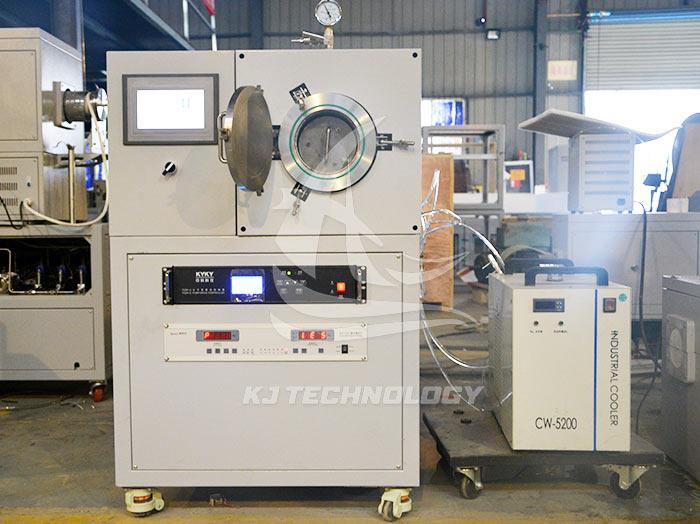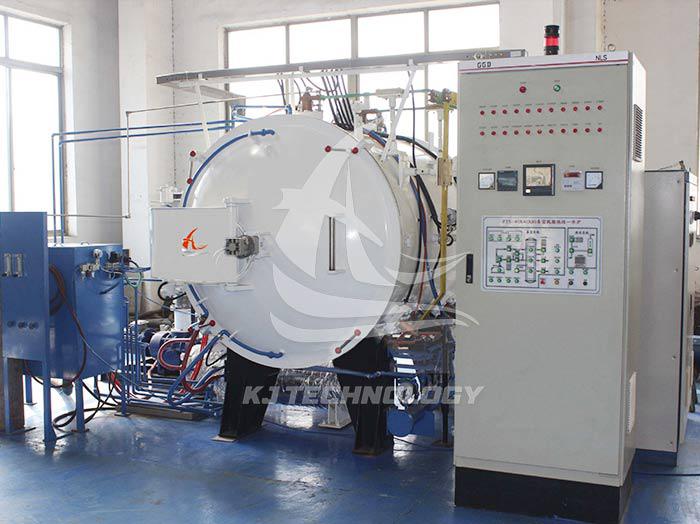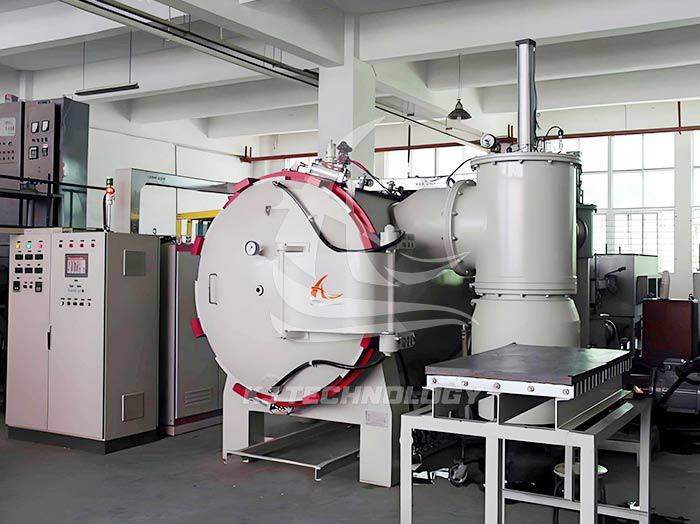High vacuum and high temperature muffle furnace
 09-16-2025 Author: KJ technology
09-16-2025 Author: KJ technology
High vacuum and high-temperature muffle furnace is a special equipment that achieves high-temperature heating in a highly vacuum environment. Its core advantage lies in providing pure and controllable experimental conditions for material synthesis, modification, and performance testing by eliminating interference factors such as oxygen. The following analysis will be conducted from four aspects: working principle, core characteristics, application areas, and purchasing suggestions:
1. Working principle
The high vacuum and high temperature muffle furnace uses a vacuum pump to pump the air inside the furnace to a high vacuum state (usually ≤ 10 ⁻ ³ Pa), while using heating elements (such as silicon carbon rods and silicon molybdenum rods) to generate heat, mainly through radiation heat transfer, combined with a small amount of convection and conduction, to evenly transfer heat to the samples inside the furnace. The temperature control system (such as PID algorithm) monitors the temperature in real time through thermocouples or thermal resistors, and adjusts the heating power to ensure temperature stability (the fluctuation range can be controlled within ± 1 ℃).
2. Core Features
High vacuum environment
The oxygen content inside the furnace is extremely low, effectively preventing material oxidation and suitable for experiments that require extremely high purity, such as metal smelting and ceramic sintering.
A vacuum environment can also reduce gas convection, decrease heat loss, and improve energy utilization efficiency.
High temperature processing capability
The temperature range usually covers 200 ℃ to 1800 ℃, and some models can reach over 2000 ℃, meeting the high-temperature treatment needs of various materials such as metals, ceramics, and composite materials.
Fast heating rate (up to 20 ℃/minute), shortening the experimental period.
Uniform heating and precise temperature control
The furnace adopts a multi-layer ceramic fiber structure or alumina fiber material, combined with a reasonably designed heating element layout, to achieve temperature field uniformity (temperature gradient ≤ 5 ℃).
Equipped with high-precision temperature sensors and PID controllers, supporting complex process control such as programmed heating and constant temperature maintenance.
Safety and reliability
The furnace body is designed with a metal shell and insulation material, with a low surface temperature (usually ≤ 60 ℃), reducing the risk of burns.
Equipped with multiple safety protections (such as overheating protection, leakage protection, vacuum interlock protection) to ensure safe operation.
Modularity and Scalability
Support optional atmosphere control systems (such as inert gas protection and vacuum environment) to meet different experimental needs.
Some models offer optional accessories such as observation windows and rapid cooling devices to enhance experimental flexibility.
3. Application Fields
Scientific research field
Materials Science: The study of the thermal stability, phase transition behavior, and high-temperature physicochemical properties of materials.
Physical Chemistry: Simulating high-temperature processes in natural environments (such as rock genesis and cultural relic evolution).
New energy: Developing battery materials, catalysts, etc.
industrial production
Metallurgical industry: metal melting, casting, heat treatment (such as annealing, quenching).
Ceramic glass: ceramic sintering, glaze melting, glass forming.
Environmental protection field: Handling hazardous waste and pollutants to achieve harmless and resourceful utilization.
laboratory analysis
Sample ashing, pyrolysis and other pre-treatment provide pure samples for subsequent analysis.
4. Purchase suggestions
Clarify requirements
Determine the temperature range (such as 1200 ℃, 1600 ℃), furnace size (such as Φ 100mm × 200mm), and vacuum requirements (such as 10 ⁻³ Pa).
Select additional functions based on the type of experiment (such as atmosphere control, rapid cooling).
Check the heating element material (such as silicon carbon rod suitable for 1000-1500 ℃, silicon molybdenum rod suitable for 1500-1800 ℃) and furnace material (such as alumina fiber with better insulation performance than ceramic fiber).
Avoid choosing low-priced and low-quality products, which may have issues such as inaccurate temperature control and short lifespan, increasing long-term costs.
Consulting experts and user reviews
Consult with suppliers or industry experts for professional advice.
Refer to the user experience of other users (such as heating speed, temperature uniformity, after-sales service) and choose a brand with good reputation.
Emphasize after-sales service
Confirm whether the supplier provides installation and commissioning, operation training, spare parts supply, and maintenance services.
Priority should be given to suppliers who provide long-term warranty (such as 1 year) and quick response (such as on-site within 48 hours).








